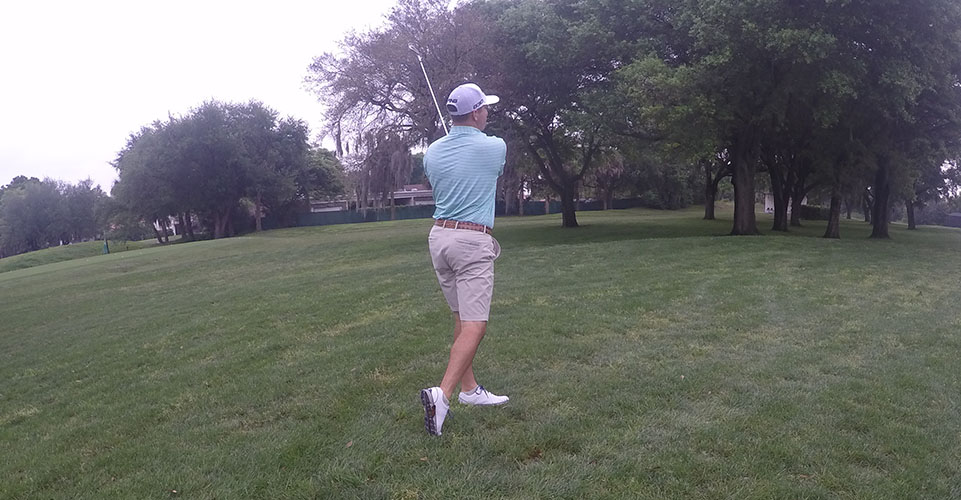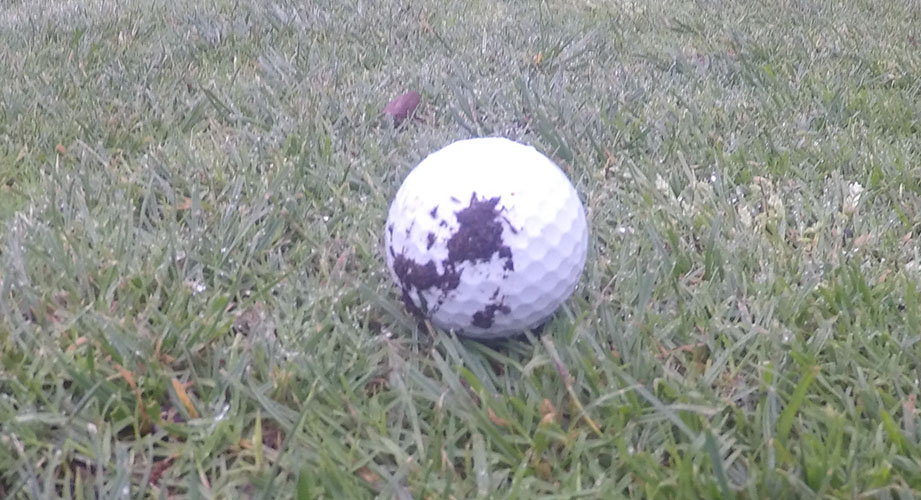Some things aren't in our control when it comes to the game of golf. Nothing is more frustrating than hitting a perfect tee shot only to find a big hunk of mud on your ball. Mud can make your golf ball do crazy things in the air. Understanding why the ball is reacting the way it does will help you to conquer the dreaded mud ball.
The mud is going to make your golf ball curve automatically. Any attempt to fight this will decrease predictability.
Where is the Mud?
The first thing to do when you see mud on your ball is to identifty exactly where the mud is. Is it on the left side? Right side? In the middle and slightly on the right? All of these will make the ball do different things. Once you have figured out where the mud is it's time to make some adjustments:
- Ball Flies Opposite the Mud - As a general rule of thumb, if the mud is on the right side of your ball, the ball will go left. If the mud is on the left side, your ball will go to the right. The more mud there is on the ball, the more this effect will be exaggerated. The average amount of curve for a standard mud ball is about 20 yards. But the truth of the matter is that mud balls are an educated guessing game. Always aim for the mud to push the ball in the direction opposite the side it's on and learn from the shot.
- Don't try to curve it - In other words, take your normal golf swing. The mud is going to make your golf ball curve automatically. Any attempt to fight this will decrease predictability. After you have calculated how much the ball is going to curve one way or the other, commit to the shot and hit it. If the mud is on the left side, the ball is going to slice in the air. All you can do is accept it and allow for it. This is one of the few times that the golf ball isn't in your complete control. Don't get upset if your golf ball goes way right or left. Instead, try and learn from the mud so you are prepared for the next time.
- Keep it Low - When your ball has a lot of mud on it, the last thing you want to do is hit the ball high and allow it more time to curve. Instead, take extra club and keep it as low as possible. Keeping it low will minimize the amount risk and hopefully get you back into position. An abbreviated follow through will help you keep the ball low.
- Trust It - This is often the most difficult part of hitting a mud ball. It takes a lot of guts to aim 20 or 30 yards away from your target and trust that the mud is going to curve it back on line. It will. All you have to do is aim for it and take your normal swing and trust the mud to do the rest.
if the mud is on the right side of your ball, the ball will go left and vice versa. The average amount of curve for a standard mud ball is about 20 yards.

Keep The Ball in Front Of You
Normally when you're in the middle of the fairway you want to aim at the hole and take enough club to get there. Unfortunately, when mud sticks to your ball you can't do that. Play more conservatively. Figure out how far you are from the front edge of the green. Hitting your approach to the front edge of the green will allow you the best chance to make par. Up and downs are almost always easier from short of the green rather than pin high or past the flag.
Figure out how far you are from the front edge of the green. Hitting your approach to the front edge of the green will allow you the best chance to make par.
